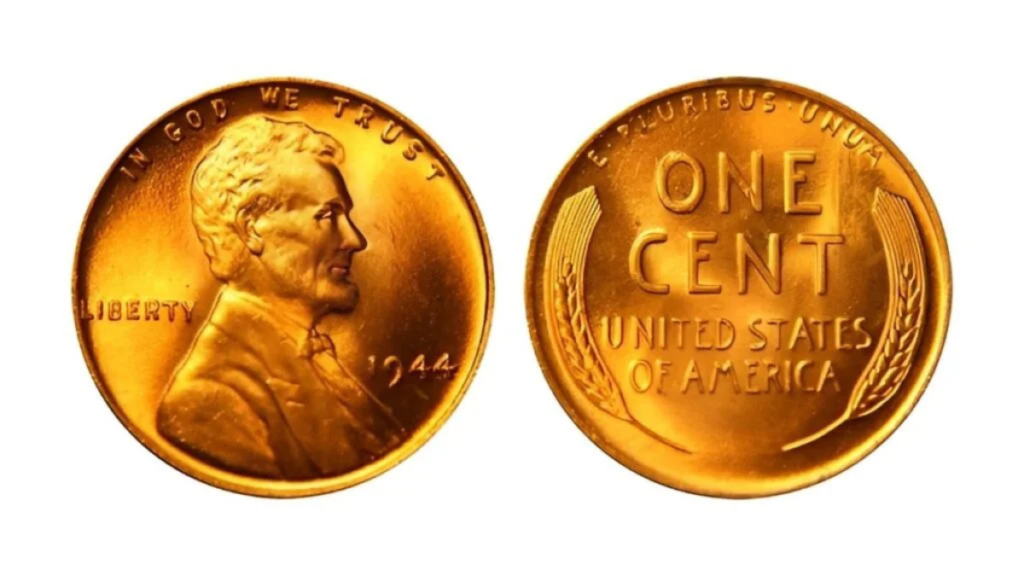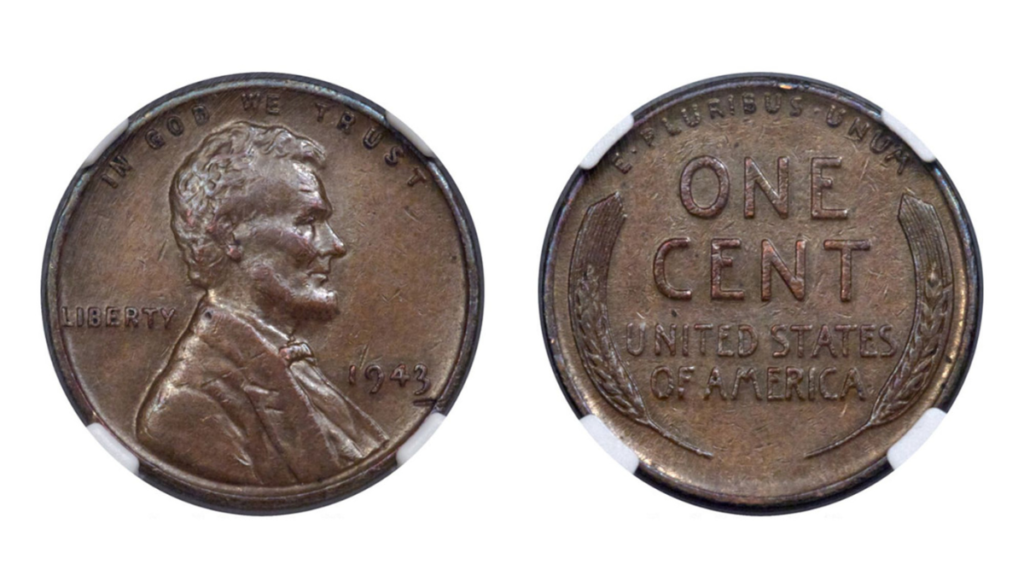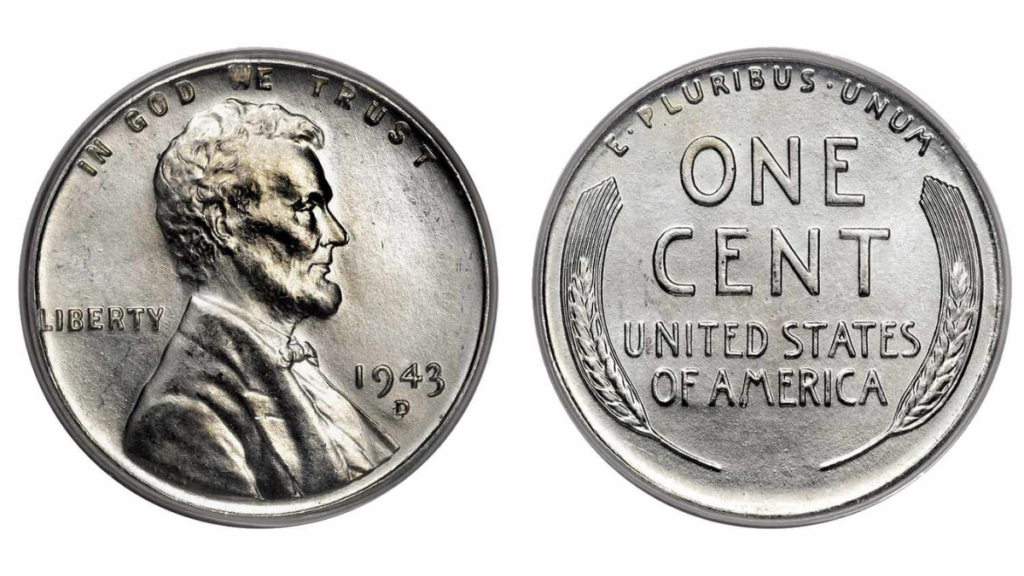The 1943 steel penny holds a fascinating place in numismatic history. What began as a wartime cost-cutting measure turned into one of the most coveted and valuable coins in American history. Here’s the incredible journey of this seemingly ordinary penny that went from a simple mistake to a $10,000 treasure.
Wartime Economy and the Steel Penny’s Birth
In 1943, the world was embroiled in World War II, and the U.S. government was under immense pressure to conserve copper for military use. This led to a decision that would later create a historic coin—the 1943 steel penny.
Before the war, pennies were made from copper, but the demand for copper skyrocketed during the war, particularly for ammunition and other military equipment. To save copper for the war effort, the U.S. Mint switched the composition of pennies from copper to steel, coating them with a thin layer of zinc to protect against rust. This resulted in a distinctively silver-colored steel penny, which was produced throughout 1943.
The Minting Blunder: Copper Returns by Mistake

However, amid the switch to steel, a minting blunder occurred. A small number of pennies from 1943 were mistakenly struck in copper rather than steel, making them highly rare and valuable. These 1943 copper pennies are now considered one of the most sought-after coins by collectors.
The exact number of copper pennies struck in 1943 is not known, but it is believed to be fewer than 20—with only a handful of them being discovered in recent decades. Some of these coins have made headlines after fetching huge sums at auctions, with some individuals claiming to have found them in circulation.
The Discovery: Finding the Treasure
The first documented discovery of a 1943 copper penny occurred in 1947, when a man named Henry Becher found one while searching through his coin collection. Becher had inherited the coins from his grandfather, and among them was a 1943 penny that didn’t match the steel-colored pennies produced that year.
Becher’s coin was authenticated by the U.S. Mint, and it became a valuable piece of numismatic history. Since then, other 1943 copper pennies have surfaced in various places, often tucked away in old collections or unearthed in unexpected circumstances.
One of the most famous finds came in 2010, when a rare 1943 copper penny was auctioned off for $1.7 million, setting a new record for the coin. It was graded in perfect condition, and its historical significance made it an attractive asset for collectors.
Why Is the 1943 Copper Penny So Valuable?

The value of the 1943 copper penny comes from its rarity and historical context. There were only a handful of these copper coins accidentally produced, making them incredibly difficult to find. Moreover, these coins are a direct link to the economic pressures of World War II and the urgent need to conserve metals for wartime production.
Additionally, the fact that these pennies were struck during a critical period in U.S. history makes them even more intriguing to collectors. As a result, the 1943 copper penny is not just a piece of currency but a piece of American history.
The Myth and Mystery of the 1943 Copper Penny
For many years, rumors circulated about the existence of the 1943 copper penny, with collectors speculating that many might still be hidden in old coin collections or buried in attics. In fact, some counterfeit 1943 copper pennies have been created over the years, as fraudsters attempted to capitalize on the coin’s rumored value.
It’s essential to have a proper authentication process to confirm that a 1943 copper penny is genuine, as the counterfeits have become more sophisticated over time. The U.S. Mint and third-party grading services like PCGS (Professional Coin Grading Service) and NGC (Numismatic Guaranty Corporation) are trusted sources for confirming the authenticity of these coins.
The Ongoing Legacy of the 1943 Steel Penny

Even though the steel pennies were produced for only one year, they have left a lasting impact on coin collecting. While the steel 1943 penny is not worth a small fortune like its copper counterpart, it remains an interesting and historically significant piece of American currency.
In fact, steel pennies have become collectible in their own right. While they are worth only a few cents to a few dollars depending on their condition, they are prized by numismatists as a symbol of wartime ingenuity and the American effort to cope with the constraints of World War II.
Conclusion: A Wartime Coin That Became a Treasure
The story of the 1943 steel penny is a testament to how a simple mistake in the minting process can turn into a rare treasure. From its origins in wartime necessity to its accidental transformation into a valuable coin, the 1943 copper penny stands as a fascinating piece of history. For collectors, it remains a symbol of rarity, a connection to a crucial time in American history, and a coin that could be worth more than its weight in gold.
Would you like to learn more about the authentication process for rare coins or how to get started with numismatic collecting?
FAQs:
Q.How do I sell a 1943 penny?
A.Consult a professional to authenticate it, then sell through dealers, auctions, or online platforms like eBay.
Q.Where can I find a 1943 copper penny?
A.Finding one in circulation today is nearly impossible, but they can be purchased through coin dealers or auctions.
Q.How can I tell if my 1943 penny is steel or copper?
A.A steel penny is magnetic; a copper penny is not.
Q.What makes the 1943 Steel Penny valuable?
A.It’s not so much the steel version, but the rare 1943 copper penny that’s worth thousands due to minting errors.





